The road of moving to the Netherlands from the US was plastered with a whole lot of surprises and confusion. Here’s what you need to know if you’re an American wishing to find a new home in the lowlands.
When I first moved abroad, I knew everything would change, from the smallest details of life to the overall experience.
To give you an idea, and maybe prepare you for your own move — here are the biggest differences I have noticed as an American moving to the Netherlands.
1. Grocery stores
The US has many grocery stores with an astounding supply of goods, from smaller Trader Joe’s to big-box chains like Costco.
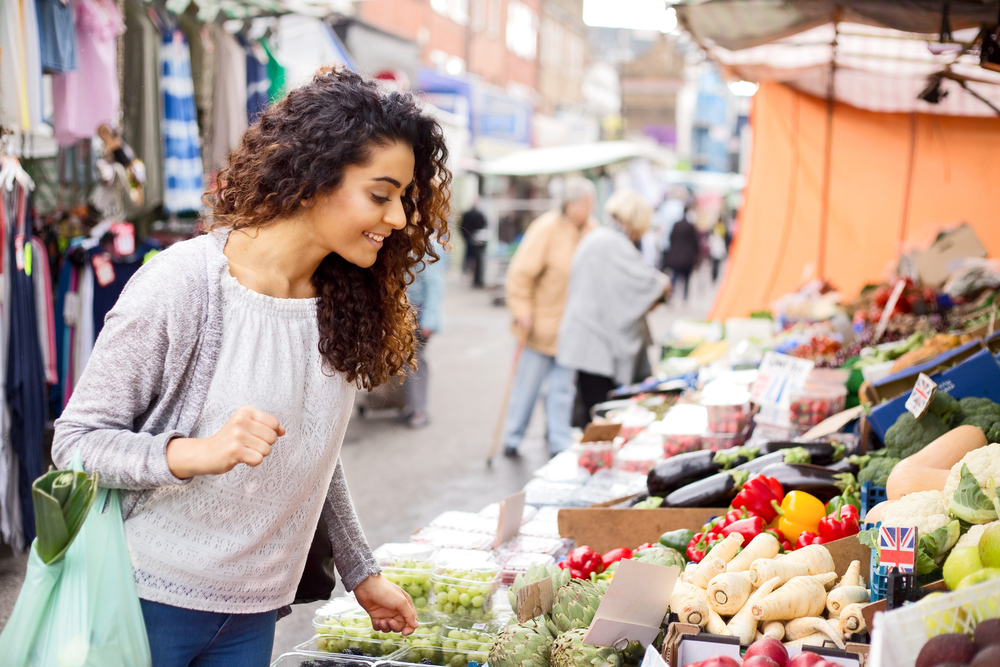
While you learn to find alternatives for your favourite recipes from home, be reassured that most Dutch food has fewer additives than the US due to stricter regulations — a definite plus for your health!
READ MORE | The ultimate guide to the cheapest supermarkets in the Netherlands
Supermarkets in the Netherlands are wonderful and fundamentally different to what we’ve got here in the US. They even function as your local post office! Here are some other things I think may surprise you as an American shopping at a Dutch grocery store.
🛒 Baskets
Most supermarkets have baskets with wheels you can push around the grocery aisles. Some also have shopping carts, like Jumbo — a major chain you’re relieved to see in English, except it’s pronounced “yum-bo.” Sorry, false alarm!
🥚 Eggs
These aren’t refrigerated and won’t be found in chillers. They’re just on an ordinary aisle shelf. Why? The EU doesn’t allow eggs to be washed like the US.
🍾 Alcohol
Only beer, wine, and pre-mixed drinks are sold in supermarkets but not hard liquor like whiskey or vodka. However, the prices are astoundingly low since you usually won’t see wine sold for over €10!
If you want to buy hard alcohol, you’ll need to head to the Sliterij or liquor store (although most supermarkets have their own liquor store right next to the supermarket).
♻️ Recycling centres
Fees for recycling bottles and cans are much higher than in the US, at 25 cents for each bottle deposit (statiegeld).
That means when you buy plastic or glass bottles, you will pay a small amount included in the price. However, you can get your deposit back once you recycle at a machine located in the store.
🤳 Self-checkout
Like in the US, there is a self-checkout in most Dutch supermarkets. However, in the Netherlands, you won’t be able to leave the grocery store without scanning your receipt’s barcode.
Also, baggers (people that help you bag your groceries) don’t exist in the lowlands, and you’ll learn what pressure feels like whilst trying to keep up with the cashier scanning your goods.
2. Food
The Netherlands is famous for its tulips, clogs, windmills, and stroopwafels. However, if you didn’t know, there are other quirks to the Dutch diet.

🥖 Bread
Forget about everything the US tells you about carbs and eating less bread if you want to fit in. Bread is a staple in Dutch culture.
You’ll see long lines at farmers’ markets in front of the bread stall, and if you go to the grocery store later in the day, chances are you’ll find nothing but crumbs in the bakery section.
🧀 Cheese
The second essential to a Dutch lunch. If you love cheese, you’re in for a treat because this country has tons of it. You will never be the same after having seen these fabulously huge, round wheels of Dutch cheese.
If you buy some at specialist cheese shops or farmers market stands, you can usually get a generous sample, if you ask. Who needs Costco samples anymore?
READ MORE | Dutch cheese varieties: the comprehensive guide
Also, let’s talk Gouda cheese. That lovable cheese Americans call “goo-duh” is actually pronounced as “how-duh”, with the typical throaty-scratchy ‘g’ in the beginning. You’re welcome because if you anglify while ordering a chunk of aged “goo-duh”, you’ll be met with quite a bit of confusion.
🍟 Fries
The American ketchup is king, but in the Netherlands, it’s the Dutch mayonnaise that rules the kingdom of condiments. Try it, you’ll likely love it more than you care to admit. Don’t fear, though, you can still find ketchup at any fries stand in the Netherlands if old habits die hard.
3. Restaurants
Dining out is another one of those activities that hold quite a few surprises when coming from good old American dining culture. Here are some of them.

💧 Drinks
Tap water isn’t given out willy-nilly over here. You’ll be asked if you want still or sparkling and have to badger them for some kraanwater.
When it comes to sodas, gone are the days of a medium, large, or XL refillable size. In the Netherlands, you’ll be getting a petite glass bottle smaller than your phone. And don’t even think about asking for refills!
Getting coffee in the Netherlands is also a completely different ball game. These will likely be smaller than what you’ve seen normalised at Starbucks. No more tall, grande or venti sizes! Iced coffee also doesn’t exist everywhere, and make sure that there are ice cubes since ijs koffee can also mean finding a scoop of ice cream in it. (Gross.)
🍽 Doggy bags
Leftovers being taken home simply aren’t as common here since the portions are not as large as in the US, but in recent years it’s slowly becoming more acceptable to make this request.
I’ll never forget the time I received my leftovers in a plastic yoghurt container two years ago, but I appreciated the effort!
💵 Payment
This is actually super convenient in the Netherlands as your server will carry a handheld credit card machine so you can pay right from your seat. Oh yeah, and don’t fret if you can’t make the tip. Giving tips isn’t customary in restaurants or other services.
The majority of service workers in the Netherlands make a livable wage, unlike in the US, where tips are heavily relied upon. You can definitely offer, but some people will even refuse to take it (insanity).
3. Shopping
The US really has its citizens spoiled by making shopping as accessible as possible, but also at the cost of employees who work late or long hours. What did we really ever need from Target after 10 PM?

🕞 Opening hours
It’s not uncommon to see stores or businesses open from 10 AM and close at 6 PM here in the Netherlands. Weekends usually have shops closing by 5 PM. On Sundays and Mondays, many businesses open at 12 PM, such as grocery stores, but some do not open at all.
If the establishment is open on Sunday, they may be closed on Monday instead for a rest day.
Also known as koopavond in Dutch, many cities observe this with stores closing later than usual at 9 PM and typically on a Thursday or Friday. In the Amsterdam shopping area, you may find later weekday shopping hours, with stores closing at 8 or 9 PM.
💰 Payment
Not all stores will accept Visa or Mastercard, especially smaller Dutch establishments. More recognisable retail stores are likely to accept Visa or Mastercard, luckily, but it’s best to have a Dutch banking card or euros on hand if you’re new!
And remember, the price you see is the price you pay, all taxes are already included.
4. Working Culture
The Dutch working culture is verrry different to the US. For one, there is such a thing as a work-life balance.

Breaks are actively encouraged, whether it’s a 10-minute coffee break or your annual leave. Speaking of vacations, they are referred to as “going on holiday,” in the Netherlands. You get 4x your weekly working hours, so if you work 40 hours a week and you’re entitled to 160 hours or 20 days off in the year.
READ MORE | The work-life balance in the Netherlands is the best in the world
Also, overtime isn’t really a thing. Unlike the US, it’s not as common and possibly even strange. So get ready to clock out and get home in time for that early Dutch dinner, unless you’re staying for a post-work borrel, of course.
5. Driving
The Netherlands is famous for its bike-riding inhabitants, and public transportation is known to be excellent too. Yet, plenty of people still drive cars — and you’ll be relieved to know that the Dutch drive on the right side of the road just as we do in the US.
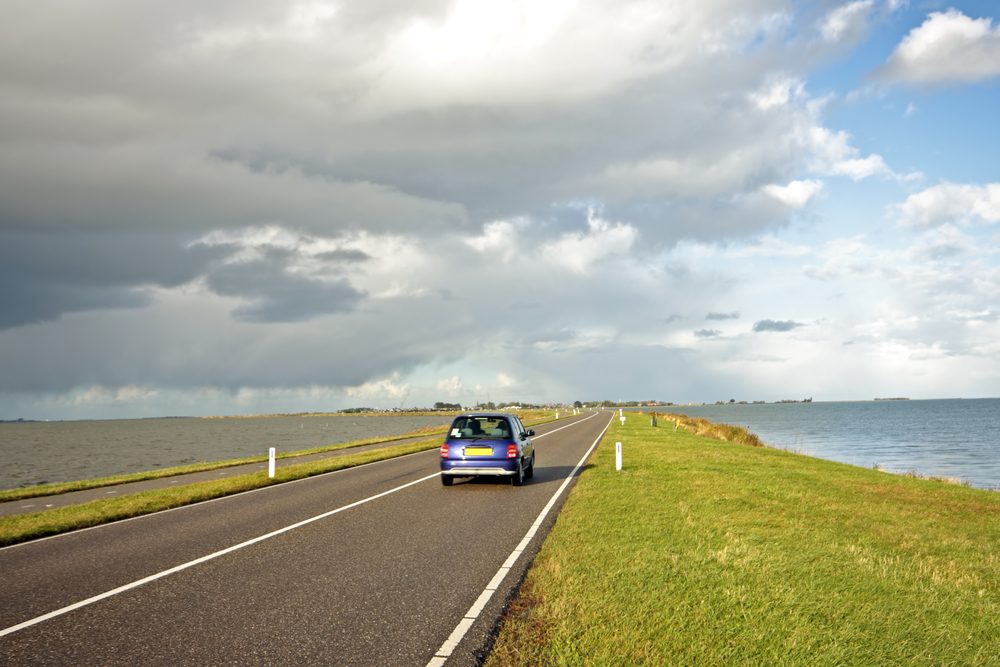
Nevertheless, there are still some things you should know when driving in the Netherlands as an American. (Watch out for all those roundabouts!)
⛽️ Gas
At first glance, fuel looks cheap, especially if it starts with a €1 something, but it’s sold in litres, not gallons, which are much smaller. There are roughly 3.7 litres in 1 gallon, so when you do the math, it adds up to roughly the same amount as in the US.
🏎 Speed limits
Surface roads are typically 31 mph and freeways are a maximum of 75 mph. Why such odd increments of speed? Because mph isn’t a thing here, but km/h is.
It’ll take a moment to get used to kilometres, so if you’re driving, make sure you’re not thinking in miles, or you may get a speeding ticket due to many cameras!
6. Four seasons in a day
Depending on where you are from in America, you may or may not be shocked by the moody weather and odd seasons here. Although winter can be brutal with low temperatures down to -6 degrees, spring makes up for it with its beautiful blooms!

The weather can be tumultuous. Sunshine, overcast clouds, wind, and rain — it’s not unusual to experience all of these in just one day (or a couple of hours). Overall, there’s not that much sun throughout the year, so it might be worth investing in a Vitamin D lamp or taking some supplements.
🌦 Dutch summers
Summer days are long in the Netherlands, with the sun rising around 5 AM and the sun setting at 10:30 PM.
When it’s warm or nice out, you’ll see many people on their balconies or rooftops, sitting at the canal side or even bringing their own tables out in alleys and sidewalks to dine with friends. You may even spot the occasional couch just propped out on the sidewalk.
7. Measurements
This is sure to be a pain when it comes to cooking, weather, clothing alterations, haircuts, and more since the US is only one of a few countries in the world that uses a different system for temperature and measurement. Welcome to gibberish in numbers.
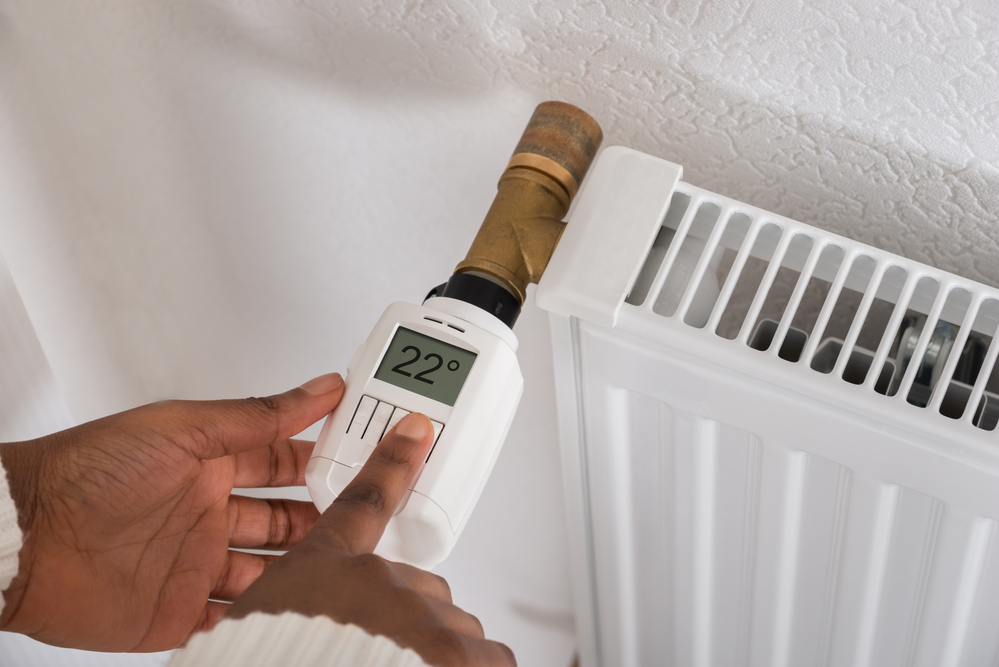
The US uses the imperial system of feet, inches, pounds, ounces, etc., while the Netherlands/EU uses the metric system for metres, centimetres, kilos, grams, etc. I find it handy to ask how long it takes to get somewhere if I don’t remember the conversion for distance.
We are also the few that use the Fahrenheit system instead of Celsius for temperature. Our numbers sound excruciatingly hot to Europeans, whereas we’re asking ourselves what the heck 10 degrees is supposed to feel like.
8. Time and date
If you’re from America, you’re accustomed to the date format MM/DD/YY, but the Netherlands uses DD/MM/YY. This is especially important when filling out documents or making appointments and reservations. 😅

If you already know how to tell military time, it’ll make your life easier wherever you go in Europe. It’s one thing you can also start in the U.S. before you move, as I did for fun before I knew I’d become an expat.
Note: for those that aren’t sure, the 12-hour clock is when you use am-pm, the 24-hour is military time. So, 12:00 midnight is 00:00 in military time.
I wish it stopped there, but telling the time in the Netherlands gets even more confusing.
You will find that asking a Dutch person for the time may set you in a tailspin. If you ask for the time at 9:30 PM, they will tell you it’s “half ten”. While English speakers may think this means it’s half past ten, Dutch speakers actually mean it’s half to ten! What the hell Dutchies??
9. Sirens
What is that blaring noise? No, the city is not on fire! On the first Monday of every month, your municipality will do a siren test at 12 PM. Don’t be confused or alarmed.
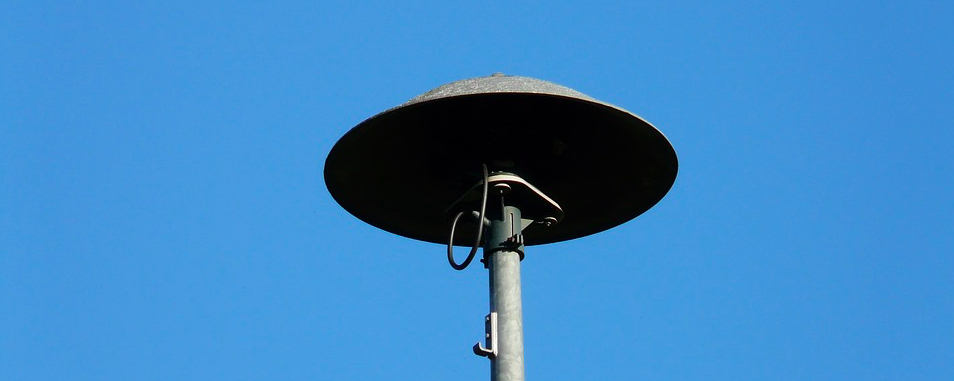
It’s the Dutch way of testing the public warning system, which sounds like a historical sound from Europe’s war-torn past.
READ MORE | Sirens in the Netherlands: are we under attack?
10. Restrooms
Carry a couple of euro coins or have your card ready since taking care of business isn’t free in places like the airport or the gas stations.
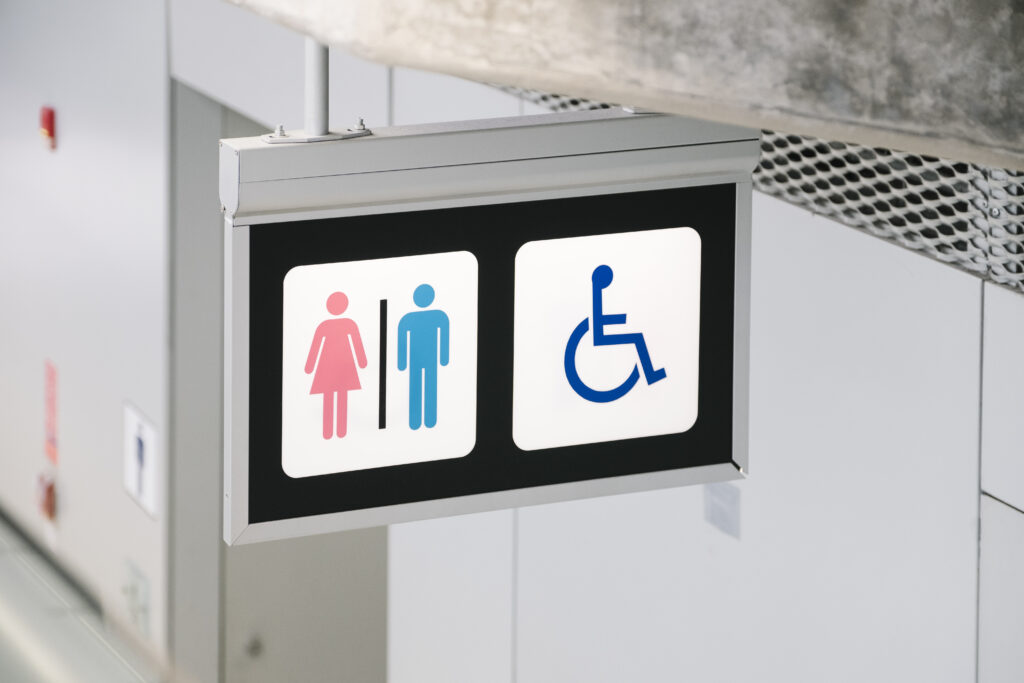
I know what you’re thinking, gas stations… good news, they’re not as scary as the ones in the US. In fact, gas stations in the Netherlands are pleasant, and they even sell flower bouquets out front.
11. The country itself
Don’t make the rookie mistake of calling it Holland, you’ll immediately cause eye rolls all around you.

This is a region not the official name of the country called the Netherlands.
Now that you’ve read through this list, hopefully, you’re a little more prepared or learned something new about your new home in the Netherlands. The expat journey is a difficult one, but embrace the cultural differences and you will get so much more in return by keeping an open mind to change!
What differences have you noticed as an American living in the Netherlands? Let us know in the comments!
Editor’s Note: This article was originally published in October 2021, and was fully updated in July 2023 for your reading pleasure.
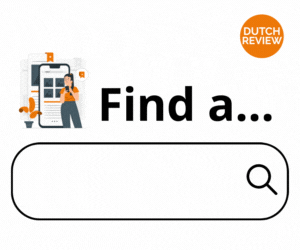
We don’t say ‘ten thirty’ we say ‘half ten’ which means ‘half TO ten’.
The British say ‘half ten’, but they then mean half PAST ten. Now that’s confusing in my view
Thank you for letting us know, we’ve fixed the mistake!
Great article :)!
One thing: Under point 8, 9:30 pm, Dutch say ‘half tien’, not ‘ten thirty’ :).
9.30 is half ten – not 10.30.
9.30 is half tien
Je hebt daar iets fout begrepen denk ik
Please don’t say tips aren’t customary in restaurants. They actually are. The difference is, what you ordered. Did you only get a drink and thats it? Then we usually don’t tip. But if you had lunch or diner, then most people tip around 10%. Especially after the lockdowns, people are even more inclined to tip out of solidarity.
Nice overview. 1 comment though, 9:30pm isn’t called ‘ten thirty’ but ‘half ten’. Still confusing because the English call it ‘half nine’. You are right though with complicated time telling… Try to explain 9:35pm
A dutchie telling you it is half ten at 9:30 is not the same as them telling you it is ten thirty. No dutchie is going to tell you that! You assuming the are saying half ‘past’ ten is your mistake it is half ‘to’ ten.
I went back to saying “holland” after many Dutch people asking me how I like living in “Holland” when they know I’m from the mid south part of the country (def not Holland region)
You forgot a few important points…regarding restaurants, it’s not the difference in tipping which is surprising, it’s the culture of enjoying your meal. In the US you will be asked when your finished if you want your check. Never happens in NL unless they are about to close or very occasionally when they have a reservation waiting and no free tables. Mostly you can finish dinner and stay and drink.
You didn’t mention the most remarkable thing about the water in NL… right out of the tap, everywhere, it’s delicious. The quality is better than bottled water actually.
Finally the gas prices definitely not about the same! They are more than double that to the US. Averagely they are 3.30/gallon in US and 1.92 per liter in NL. The prices are variable but always keep a similar ratio. So when you say ‘so when you do the math, it adds up to roughly the same amount as in the US’ , you obviously didn’t do the math! 🤣
I found Birthday parties quite different.
The birthday person/family put on the party and play hostess to guests sometimes from morning coffee to late the next morning. More often it was a shorter time which started with an individual pastry and coffee and later drinks and snacks. What I really liked about Dutch parties was the widening circle of chairs in contrast to people gathering in small groups throughout the living rooms. And lastly. As people arrived, the introductions and salutations to everyone and the farewells as people left. Very inclusive and friendly!
Fun post, but hey, at least spell the Dutch words correctly, when you use them.
Slijterij, not Sliterij
IJskoffie, not ijs koffee
Toedeloe! Cheers from A Dutch kaaskop (cheese head).